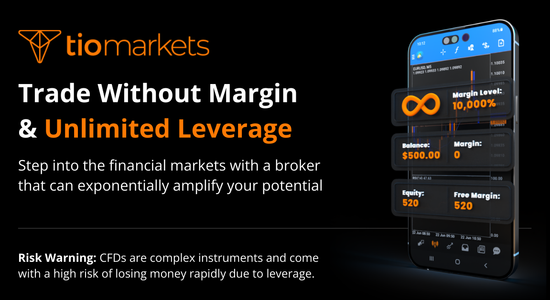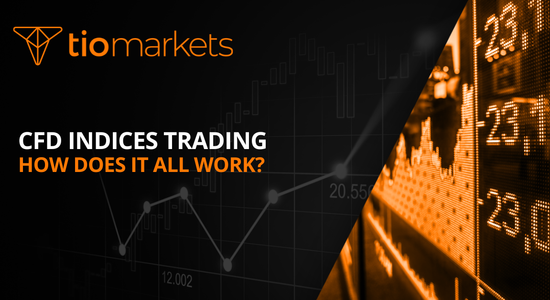What would I do differently in learning to trade if I started all over again?
BY Janne Muta
|Μαρτίου 20, 2024In this exploration of my personal learning curve as a trader, we go on a reflective journey that looks into the core principles and pivotal shifts necessary for mastering the art of trading. From the initial attraction of technical indicators to the profound understanding of market dynamics through price action, this article serves as a guide into successful trading.
We will cover the importance of focusing on the process over profits, the role of emotional detachment, the value of incremental learning, and the necessity of embracing a student mindset.
Furthermore, I emphasise the power of concentrating on a single strategy, the transformative potential of learning from mistakes, and the strategic advantage of rigorous research and momentum analysis.
This article promises to enlighten both novice and experienced traders, providing insights into developing a disciplined, evidence-based approach to trading that transcends the pursuit of quick wins in favour of building a sustainable and fulfilling trading career.
This is all just my personal experience from 20 years of trading and what I would do differently if I were to start all over again.
So without any further delay, let’s get started.
Reassessing My Trading Approach
If I were to embark on the journey of learning to trade all over again, I would significantly adjust my approach by sidelining the use of indicators and dedicating my focus solely to the price action. In my initial forays into trading, I, like many novices, was drawn to the allure of technical indicators. These tools, ranging from Moving Averages to RSI and MACD, promised a simplified pathway to understanding market movements. However, with experience, I came to understand that these indicators are fundamentally just reflections of price movements, distilled through mathematical formulas. They lag behind the real-time data, offering a reactive, rather than proactive, perspective on market trends.
Focusing on price action, on the other hand, means engaging directly with the market itself. Price action trading involves reading the raw price movements and patterns over time, without the technical indicators catching my attention. This approach allows me to study not just the 'what' but the 'why' behind price movements: shifts in the supply and demand balance. When my focus is in the price itself I learn more than by trying to interpret the indicators.
Comparing Indicator and Price Action Approaches
For example, consider a scenario where a traditional indicator might signal a buying opportunity based on historical data patterns. A price action trader, however, would look at the current market context, including volume, price levels, and recent market news, to make a decision. This could reveal that the buying signal is actually misleading due to an imminent reversal indicated by recent price action patterns such as a bearish engulfing formation (or when trading stocks or indices) a sudden increase in selling volume at a resistance level.
In retrospect, the reliance on indicators can be seen as a crutch that slows the learning process by encouraging dependency on a filtered view of the market. By concentrating on price action, I would immerse myself directly in the market's flow, developing a more intimate and responsive trading strategy that respects the market's inherent complexity. This approach not only enhances decision-making in real-time but also fosters a deeper, more intuitive understanding of market dynamics, free from the constraints of oversimplified mathematical models (technical indicators).
Prioritizing Process over Profit
If given another opportunity to learn trading from scratch, my primary shift in approach would be to detach from the immediate goal of making money and instead, pour my energy into refining the trading process itself. It's a fundamental principle I overlooked in my early days, mistakenly believing that profits are what defines successful trades rather than understanding that profits are the byproduct of a robust trading process. The reality is that a flawed process inevitably leads to undesirable outcomes, no matter how promising individual trades may appear.
Commitment to Process Development
Understanding and perfecting the trading process requires a commitment to meticulous research and continuous testing, far removed from the allure of instant financial gains. It involves a disciplined approach to studying market behaviour under various conditions, without the distraction of potential profits. This means setting aside the act of trading until there's confidence in the process's integrity and effectiveness. Identifying the right process is inherently challenging, as it requires us to study price action in several timeframes and in various market regimes. As you might already know, the price behaves differently in uptrends, downtrends and sideways movements. So, it's not simply about devising a strategy but ensuring that the strategy can be executed consistently and efficiently in different market types.
For example, in my earlier trading attempts, I found myself sticking to a strategy without properly testing it. This approach was fundamentally flawed. A more effective method would have involved establishing a systematic research cycle: starting with an in-depth analysis of price action across different market regimes, then developing a trading hypothesis. Only after this groundwork would I proceed to rigorously test the strategy using real-time data, assessing not just the strategy's theoretical soundness but also my ability to execute it under live conditions.
This process-oriented approach demands patience and a willingness to forego immediate gratification for the sake of long-term success. It shifts the focus from chasing profits to building a solid foundation that can withstand the market's unpredictability. By prioritising research and testing over premature entry into trading, I would aim to develop a trading methodology that is both resilient and adaptable, capable of generating consistent outcomes not by chance, but as a direct consequence of a well-honed process.
Emotional Detachment in Trading
In reflecting on my trading education journey, another pivotal change I would implement is to meticulously avoid any actions that could entangle me emotionally in the trading process. Emotions like hope, excitement, or fear can cloud judgement, leading to decisions that aren't grounded in rational analysis. Instead of succumbing to these emotional impulses, a more analytical and research-focused approach is essential.
It's easy to get caught up in the euphoria of a potentially successful strategy or become despondent over a series of losses. However, this emotional rollercoaster can significantly hinder one's ability to assess situations objectively and make informed decisions. For instance, upon identifying a strategy that appears effective, the instinct might be to leap into action, buoyed by excitement and the anticipation of success. Yet, this is precisely the moment for restraint and rigorous testing.
Consider a scenario where preliminary back-testing shows promising results for a new trading strategy. The immediate emotional response might be enthusiasm, perhaps even a sense of relief, at having potentially cracked the code to market success. However, rather than rushing to implement this strategy in live trading, a more measured approach is warranted. This involves subjecting the strategy to extensive testing across different market conditions and timeframes, ensuring its robustness and adaptability. It's crucial to approach these tests with a mindset of scepticism, actively looking for weaknesses rather than confirmation of success.
Understanding Strategy Challenges
The sobering truth is that many strategies, especially those devised in the early stages of learning the markets, falter under the complex and unpredictable nature of real-world trading. This is not a reflection of failure but rather a natural part of the learning curve in trading. By adopting a detached, research-intensive approach, the aim is to minimize the impact of emotions on trading decisions. This discipline helps in building a more sustainable and resilient trading practice, one that is based on evidence and rigorous validation rather than fleeting hopes or untested assumptions. It's a challenging path, requiring patience and persistence, but ultimately it leads to a deeper understanding of the markets and a more grounded approach to trading.
Skill Development Realization
Understanding the nature of skill development in trading would be another area where my approach would undergo significant refinement. The expectation of rapid breakthroughs and immediate mastery of complex trading concepts is a common trap for beginners (me included), fuelled by unrealistic portrayals of trading success. However, true expertise in trading, as in any field, is built gradually, through consistent effort and the cumulative reinforcement of skills learnt over time.
The learning curve in trading is far from linear; it is a path marked by plateaus, setbacks, and occasional leaps forward. Accepting this reality would have spared me undue frustration and impatience. Each new skill or concept learnt requires time to integrate and apply effectively, often necessitating repeated exposure and practice. Moreover, mastering one aspect of trading does not automatically translate into immediate proficiency in another; the process is incremental, with each step building on the previous ones.
For instance, developing a keen understanding of risk management principles today does not guarantee that tomorrow I can flawlessly apply these principles in every trade, nor does it mean I will grasp the subtleties of market sentiment analysis with equal ease. Recognising and accepting the slow, sometimes erratic pace of learning would encourage a more patient, methodical approach to skill development. By focusing on reinforcing what was learnt yesterday and being open to the natural ebb and flow of the learning process, I would build a solid, versatile skill set for trading.
Perpetual Learning Mindset
I would also embed the principle of embracing my role as a perpetual student of the markets. This perspective shift is pivotal, recognizing that mastering trading is akin to pursuing a rigorous academic discipline, requiring years of dedicated study, practice, and self-reflection. Central to this approach would be a systematic tracking of my progress, an activity that would serve as both a roadmap and a mirror, reflecting both my advancements and areas needing attention.
Key to this self-educational process is the proactive engagement with mistakes. Human nature often leads us to shy away from our errors, driven by the inherent desire to maintain a positive self-image. However, in the realm of trading, each mistake unfurls as a potential lesson, ripe with insights waiting to be uncovered. The inclination to overlook mistakes would be replaced with a deliberate focus on them, dissecting each misstep to understand its root causes. This involves a fundamental reframing of how I perceive mistakes, transitioning from viewing them as markers of failure to recognizing them as invaluable learning opportunities. Such a shift acknowledges that each error corrected and lesson learnt incrementally enhances my knowledge and skills, thereby increasing my chances of future success and, ultimately, my potential for achieving financial goals.
Implementing this mindset would entail maintaining meticulous records, not just of trades made, but of decisions leading to those trades, the thought processes, emotional states, and outcomes. This record-keeping would enable me to identify patterns in my trading behaviour, particularly those that serve as impediments to progress.
From this analysis, I would develop two critical lists: one with behaviours and strategies that positively impact my trading, and another highlighting those that detract from it. My daily objective would then become the systematic elimination of the latter, ensuring a continuous path of improvement and refinement. I am grateful to Mike Bellafiori, the founder of SMB Capital, for this methodical approach.
Moreover, I would eschew any premature identification with the title of 'trader'. Recognizing oneself as a trader too early in the educational journey can lead to undue self-criticism and disillusionment, especially when inevitable losses and mistakes are misinterpreted as signs of inherent incapacity rather than stages of learning. Such premature self-judgment can stifle growth, fostering a mindset of self-condemnation rather than one of constructive self-development.
By steadfastly viewing myself as a student, a learner in trading, I would maintain the necessary humility and openness to growth, preventing the discouragement that comes from unrealistic expectations of early success. This long-term educational perspective is crucial, acknowledging that there is no shortcut to becoming a proficient trader, just as there is no acceleration through the years of study required for mastering any professional discipline.
Strategy Mastery Focus
In retracing the steps of my trading education, a crucial alteration I would implement from the outset is the dedication to mastering a single trading strategy comprehensively, rather than scattering my efforts across a myriad of approaches. The financial markets are vast and complex, brimming with an array of strategies, tools, and analyses that can easily overwhelm even the most diligent learner. It’s a realm where the pursuit of understanding everything is not just futile but counterproductive, as it dilutes focus and impedes deep learning.
The essence of this focused approach lies not in the accumulation of numerous strategies but in the profound understanding and application of one. This means selecting a strategy that resonates with my trading style and goals, and then committing to an exhaustive study of its mechanisms, strengths, and weaknesses. The depth of this commitment involves not just theoretical research but practical application and observation of the strategy in live market conditions. By witnessing its performance firsthand through numerous market cycles and conditions, I build a solid foundation of trust and confidence in the strategy.
The importance of Trading With Confidence
This trust is crucial for several reasons. In the heat of trading, when decisions must be made swiftly and under pressure, doubt can be a trader's worst enemy. The confidence that comes from having seen a strategy succeed time and again provides the mental fortitude to execute trades without hesitation. It transforms theoretical knowledge into actionable insight, enabling me to navigate the markets with a sense of certainty about the approach.
For example, if my chosen strategy focuses on trend following, I would immerse myself in understanding everything about this approach—from identifying the inception of trends to recognizing signs of their exhaustion. I would study past market data, simulate trades, and then apply the strategy in real-time trading, carefully noting its performance under various conditions. Each trade becomes a lesson, contributing to a growing body of evidence that reinforces my trust in the strategy.
Conclusion
It is clear to me now that the path to trading mastery is not a sprint but a marathon. The lessons encapsulated within this article illuminate the importance of a disciplined, patient, and focused approach to learning the craft of trading. By sidelining the distractions of technical indicators and embracing the nuances of price action, focusing on the process rather than immediate profits, and cultivating an emotional resilience, traders can forge a robust foundation for success. Embracing the mindset of a perpetual student, committed to learning and refining a single strategy, allows for the development of trust and confidence that are indispensable in the volatile world of trading. Furthermore, the dedication to continuous research, especially in understanding market momentum and institutional movements, equips traders with the insights necessary to navigate the markets adeptly.
This reflective odyssey through the trading landscape highlights that true mastery lies in the appreciation of the journey itself, with all its challenges and triumphs. It underscores the significance of a methodical approach, the wisdom in learning from mistakes, and the strategic foresight in focusing one's efforts where they can yield the most profound understanding and results. For those willing to embark on this journey, the rewards extend beyond financial gains, offering insights into the markets—and oneself—that are invaluable. This article is not just a roadmap to trading success; it is an invitation to embark on a journey of continuous learning, disciplined practice, and personal growth.
This is all just my personal opinion from over 20 years of trading in the financial markets.
Are you ready to embark on your trading journey? Register your account and get started.

Risk disclaimer: CFDs are complex instruments and come with a high risk of losing money rapidly due to leverage. You should consider whether you understand how CFDs work and whether you can afford to take the high risk of losing your money. Never deposit more than you are prepared to lose. Professional client’s losses can exceed their deposit. Please see our risk warning policy and seek independent professional advice if you do not fully understand. This information is not directed or intended for distribution to or use by residents of certain countries/jurisdictions including, but not limited to, USA & OFAC. The Company holds the right to alter the aforementioned list of countries at its own discretion.

Janne Muta holds an M.Sc in finance and has over 20 years experience in analysing and trading the financial markets.
Related Posts
Trade responsibly: CFDs are complex instruments and come with a high risk of losing all your invested capital due to leverage.



